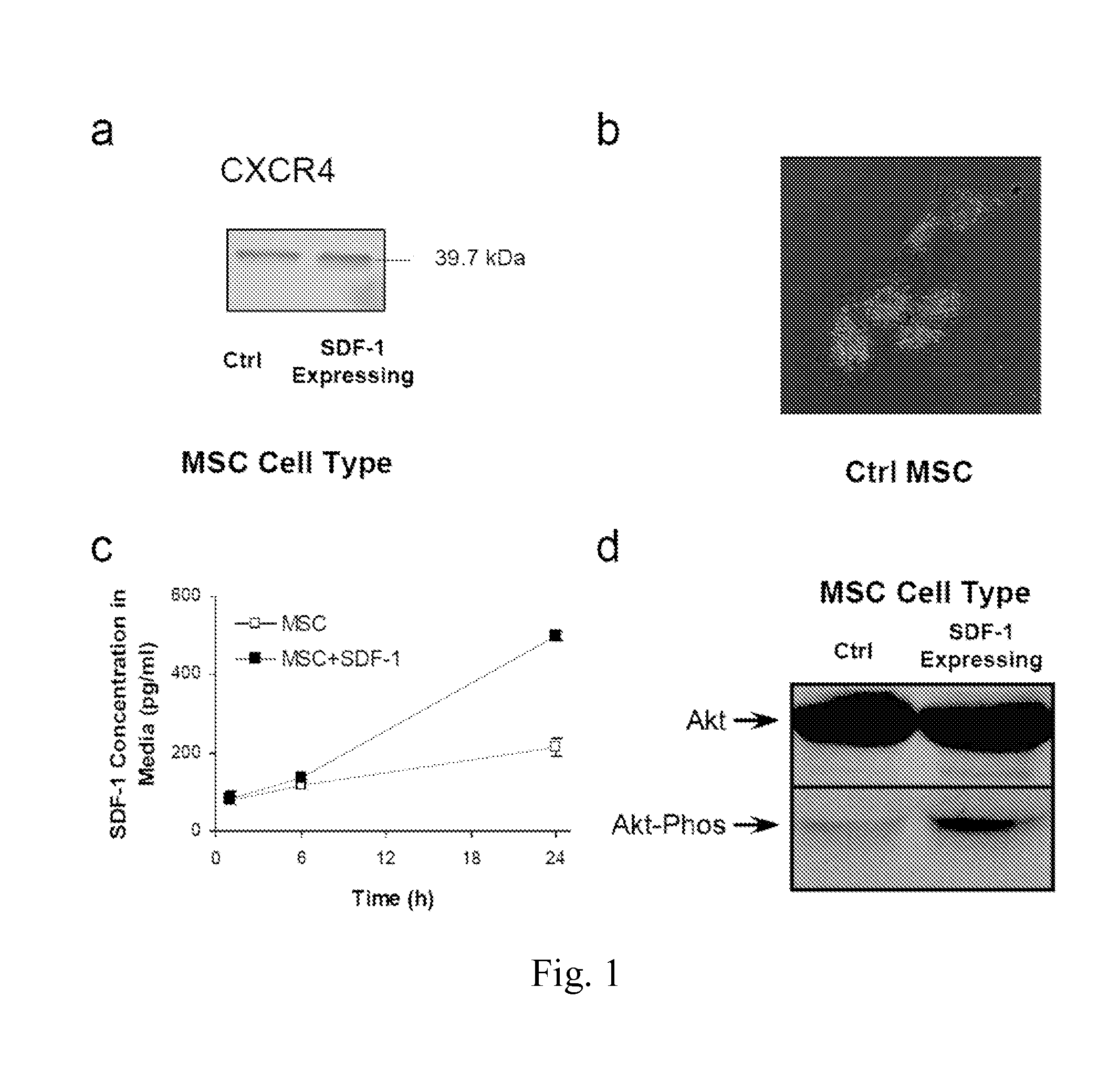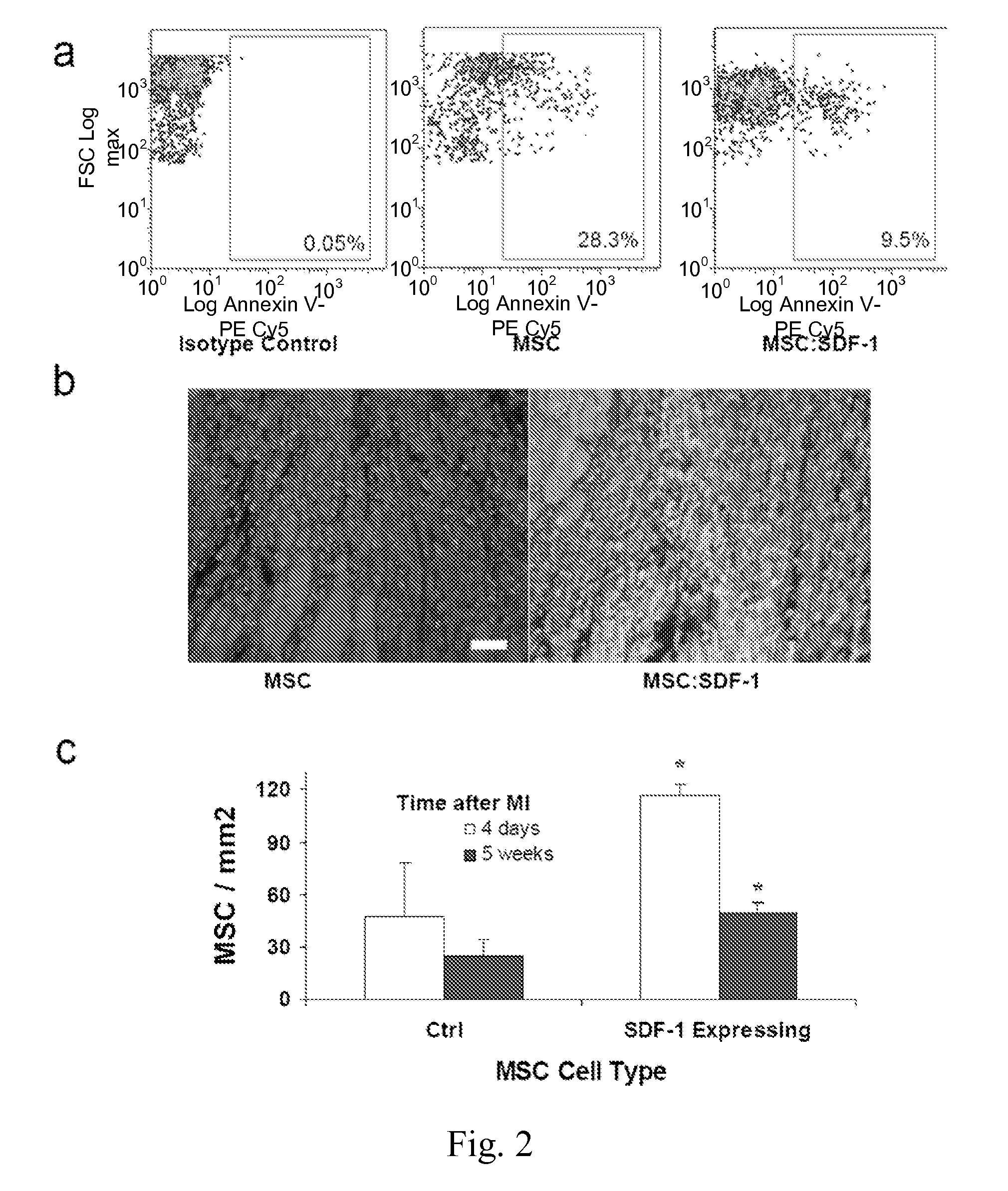Method of treating ischemic disorders
a technology of ischemic disorders and ischemic recurrence, applied in the field of ischemic recurrence treatment, can solve the problems of reduced substrate supply, accumulation of metabolites, atrophy, denaturation, necrosis of affected tissues, etc., and achieve the effect of increasing the number of stem cells and/or progenitor cells in the peripheral blood
- Summary
- Abstract
- Description
- Claims
- Application Information
AI Technical Summary
Benefits of technology
Problems solved by technology
Method used
Image
Examples
example 1
SDF-1 Expression by Mesenchymal Stem Cells Results in Trophic Support of Cardiac Myocytes Following Myocardial Infarction
[0151]The transplantation of multiple stem cell types at the time of myocardial infarction has been shown to improve left ventricular perfusion and / or function in preclinical and clinical studies. While this strategy holds great potential for the prevention and treatment of congestive heart failure, a condition that affects over 5 million Americans, the mechanisms behind the improvement remain unclear. One possibility is that the transplanted stem cells regenerate myocardial tissue by differentiating into cardiac myocytes, endothelial cells and smooth muscle cells. Another less explored possibility is that the introduction of stem cells into the myocardium at the time of acute myocardial infarction (AMI) supports the injured tissue through as yet undefined trophic effects leading to preservation of cardiac myocytes and improved cardiac function. If trophic effects...
example 2
MCP-3 is a Myocardial Mesenchymal Stem Cell Homing Factor
[0187]We have previously demonstrated that there is transient homing of hematopoietic stem cells (HSC) to the heart following myocardial infarction (MI). The transient nature of HSC homing is due, at least in part, to the transient expression of SDF-1. Whereas HSC seem not to transdifferentiate into cardiac tissue, MSC can acquire some properties of cardiomyocytes in vitro. Since MSC have also been shown to home to the heart early after MI, we hypothesized that there are similarly chemokine(s) temporally secreted by the myocardium that can attract MSC. The current study was to identify potential MSC homing factor(s) and to test their effect on myocardial function if stably expressed within the border zone of at a time remote from MI.
Materials and Methods
LAD Ligation:
[0188]The Animal Research Committee approved all animal protocols and all animals were housed in the AAALAC animal facility of the Cleveland Clinic Foundation. Lig...
PUM
| Property | Measurement | Unit |
|---|---|---|
| Disorder | aaaaa | aaaaa |
Abstract
Description
Claims
Application Information
 Login to View More
Login to View More - R&D
- Intellectual Property
- Life Sciences
- Materials
- Tech Scout
- Unparalleled Data Quality
- Higher Quality Content
- 60% Fewer Hallucinations
Browse by: Latest US Patents, China's latest patents, Technical Efficacy Thesaurus, Application Domain, Technology Topic, Popular Technical Reports.
© 2025 PatSnap. All rights reserved.Legal|Privacy policy|Modern Slavery Act Transparency Statement|Sitemap|About US| Contact US: help@patsnap.com



